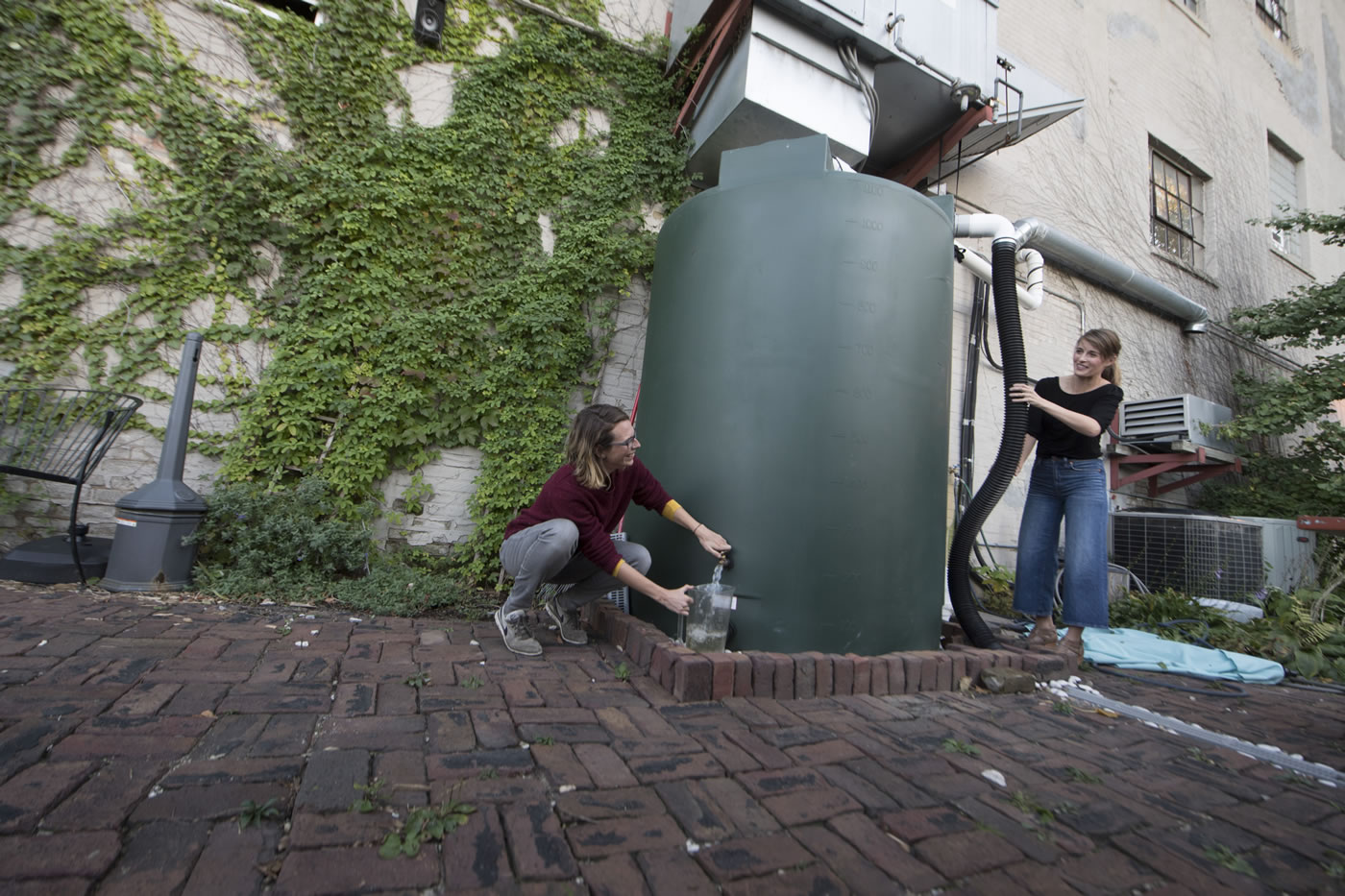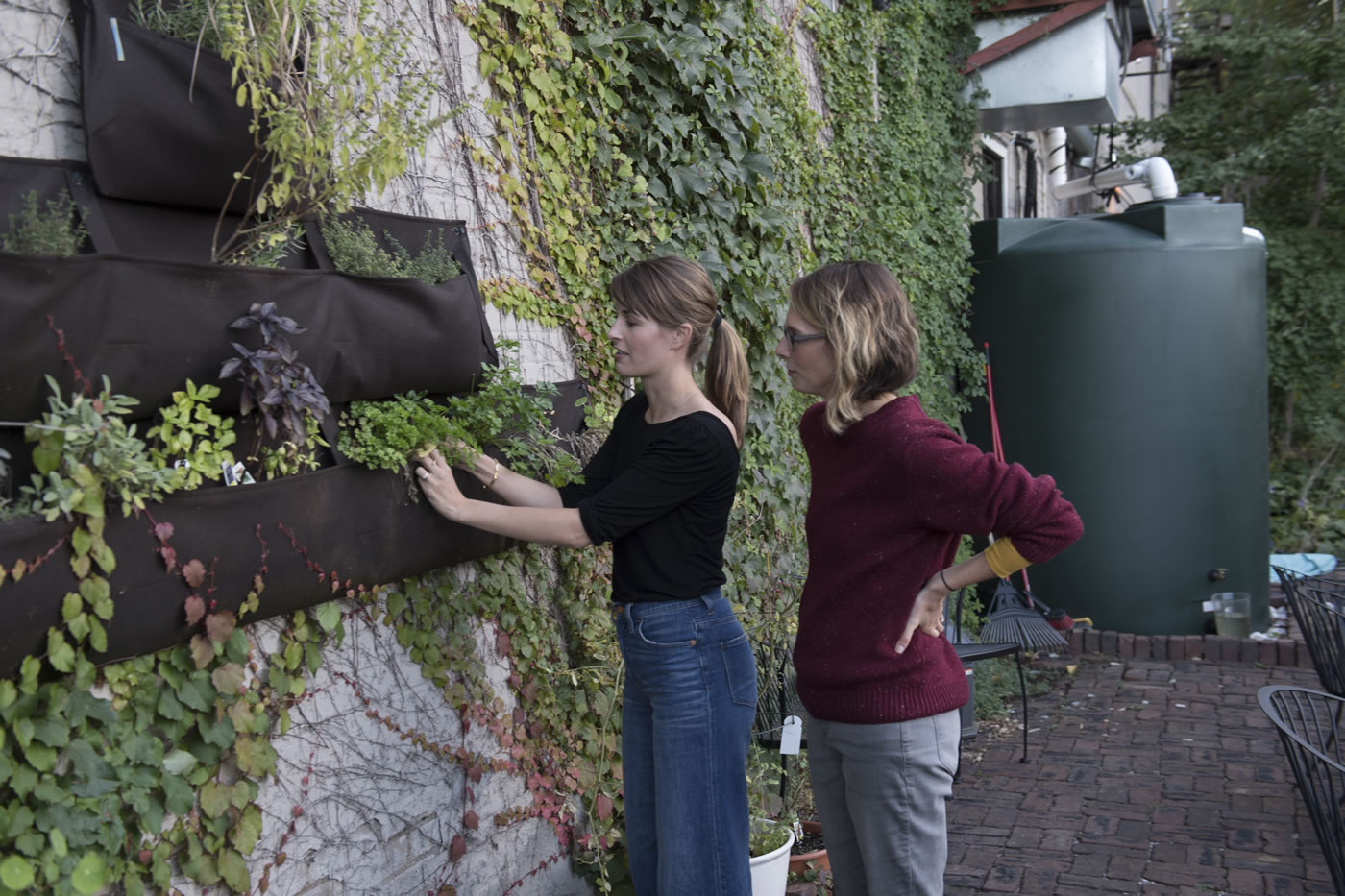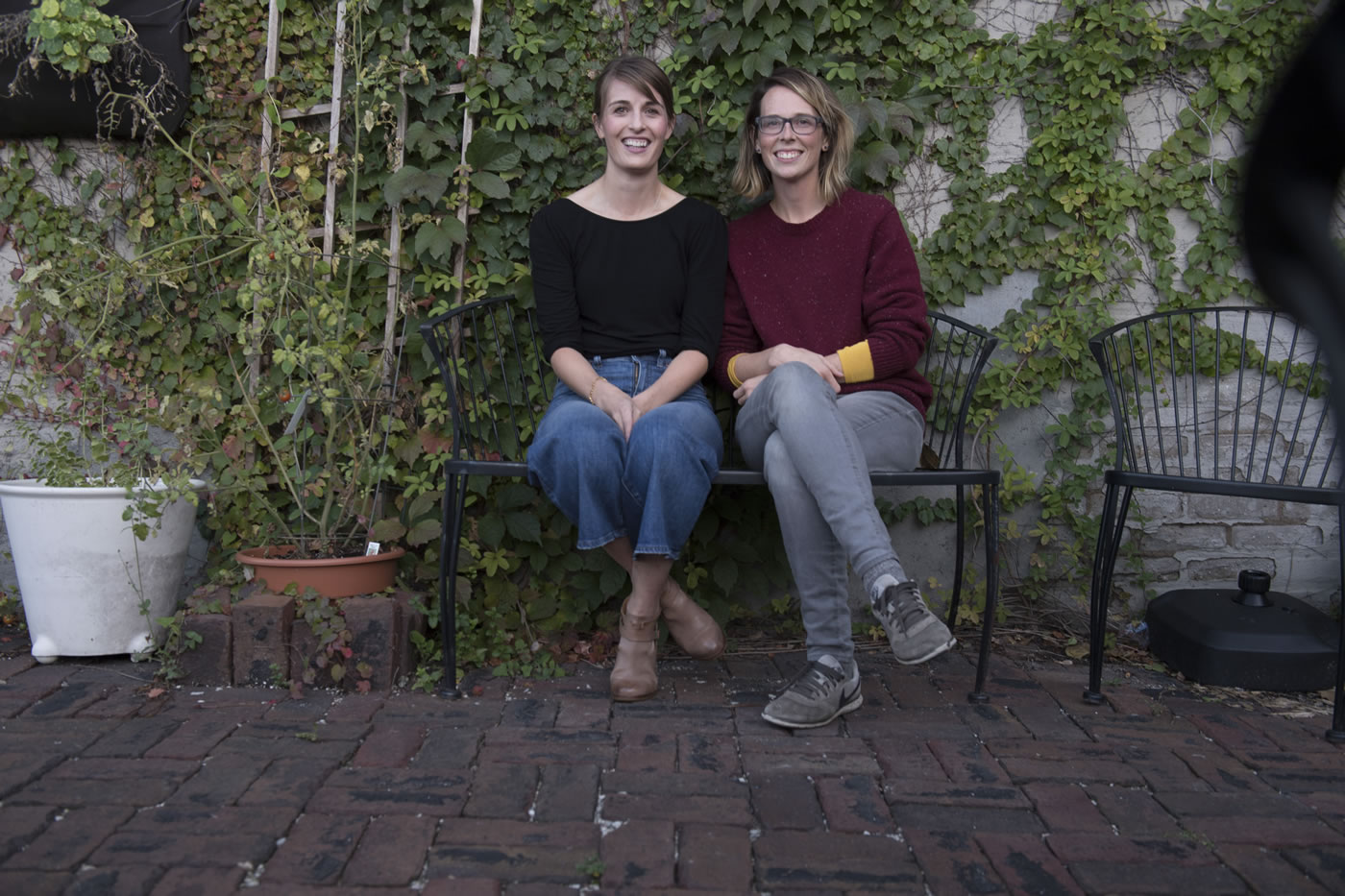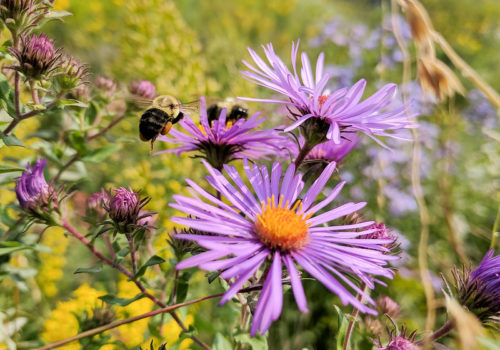Friends Turn Stormwater Problem Into a Cistern Solution

Story and photos courtesy Clean Water Minnesota.
Where once rainwater pooled on a patio, now a series of gardens flourish at the T. Rex Coffee and Cookie Café on University Ave. in St. Paul. A 1,150 gallon cistern — a giant green rain barrel — sits outside the airy “Art and Architecture” building, redirecting the water flow and snow melt off the roof to vertical and horizontal gardens.
All this is the brainchild of two ambitious friends who met during a water stewardship class at their watershed district.
“The goal really is to keep stormwater on the land in an urban setting,” says Brittany Faust, looking out over the impervious expanse of parking lot that encircles this commercial area alongside the Metro Transit green line. She is half of the dynamic duo who got to know the issue first-hand when working at the restaurant a couple of years ago.
Faust, who currently works as an environmental specialist with the Mississippi Watershed Management Organization and collaborator Kristine Maurer both cite significant childhood experiences in the wilderness as the impetus for their work on environmental issues. They both have scientific backgrounds now, (Maurer works as an environmental scientist at the engineering company Westwood Consulting) but insist that such study isn’t a prerequisite to taking local action.

First, Cistern Installation
Instead, a desire to “make a difference” beyond her job at the MWMO inspired Faust to climb around on the roof of the historic building to assess possibilities. When she presented her idea for the cistern to her master water steward class, Maurer got excited at what would eventually become a “huge” patio project: a treatment “train” of cistern, French drain (a trench filled with gravel that redirects water), rain garden, dry creek bed, and more rain gardens. “All of this slows, collects, and infiltrates water,” key to helping improve water quality in the watershed, says Faust — and beautifying the concrete expanses that surround the building.
The two figured they would need at least a 1,150-gallon tank, realizing that it would fill from the runoff of a 1-1 ½-inch rainfall. So they plunged in, building a rock foundation, installing the cistern, and refurbishing a series of rain gardens that could absorb the overflow. Plantings of lilac, river birch, and dogwood soak up the rainwater, and a vertical green wall of herbs (donated by the University of St. Thomas biology department) absorbs the rest.

Next, Outreach
Beyond the importance of the project itself, the two wanted to help others get inspired to take their own steps to keep water flowing in the productive direction of lawns and gardens rather than into storm drains.
So, working with the Tangletown Neighborhood Association, they named November “water quality month” and hosted a Water Quality Fair last fall, attracting more than 100 participants and partnerships with the Minnesota Pollution Control Agency, the Department of Natural Resources, the Mississippi Watershed Management Organization, Minnehaha Creek Watershed District, Westwood Consulting, the Master Water Steward Program, the Wetland Health Evaluation Program, and City of Minneapolis Adopt-a-Drain program. Soon, their efforts had grown from leaf-raking to stencil-painting of stormwater drains, to hosting a forum on water quality which “localized the concept of water management” says Faust.
“It’s important that people are able to talk with someone in the community — not just some random academic — but a neighbor you’re connected to on a human level, ” says Maurer, in helping inspire local action.
And both, because of their formative experiences in wilderness as children, are passionate about the importance of starting young, getting out and experiencing nature, then understanding the connections of rivers and lakes with storm drains and the possibilities for redirecting the water flow.
To that end, they are reaching out to neighborhood schools, and applying for funding to support interpretive signage and related artwork.
All of this has led to the two receiving the “Clean Water Champion” award last spring — alongside such luminaries as the governor — a distinction they would clearly like to see younger generations receive in the future.

For further information on water reuse, see the Minnesota Department of Health’s infographic which includes the applications and utility of rainwater, stormwater, gray water, and industrial and commercial water for secondary purposes, much like these water champions’ project illustrates at T. Rex Coffee and Cookie Café.
Read the original post at cleanwatermn.org.





